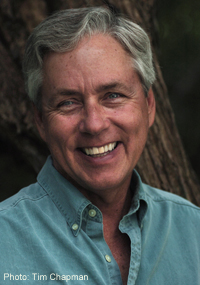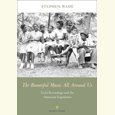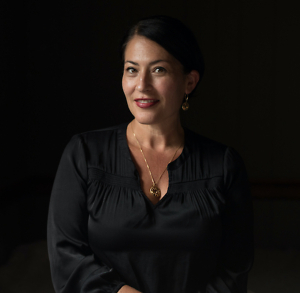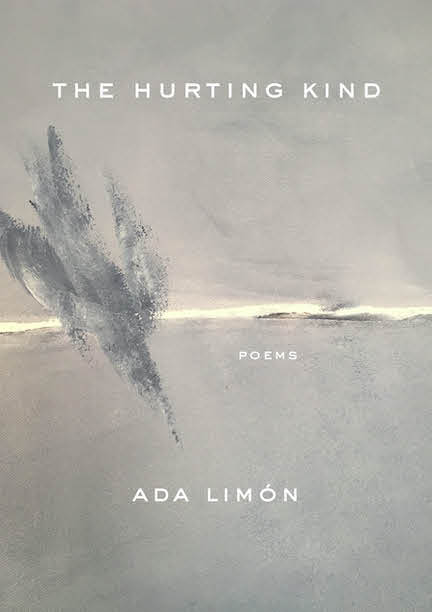No Surrender
Carl Hiaasen talks about his wacky style of Florida thriller, teen edition
In twenty-three novels, two books of nonfiction, and a Pulitzer Prize-winning column for the Miami Herald, Carl Hiaasen has captured the weird side of Florida life—and Florida crime—like no other writer. More than twenty-five years ago, in the novel Double Whammy, Hiaasen introduced Skink, a one-eyed, homeless, hilariously unstable former governor. Assisted by a sidekick with the Florida highway patrol, Skink exacted elaborate revenge upon criminals—especially those guilty of environmental crimes—through five subsequent comic novels. Now, in Hiaasen’s first book aimed at teens, Skink—No Surrender, the character teams with a teenage narrator to track down a kidnap victim deep in the North Florida wilderness.
 Prior to his forthcoming appearance at the Nashville Public Library, Hiaasen recently answered questions via email:
Prior to his forthcoming appearance at the Nashville Public Library, Hiaasen recently answered questions via email:
Chapter 16: Just below the surface of your fiction, like much of your nonfiction, simmers what might be described as moral outrage over a lost Florida—not only the state’s lost wilderness and wildlife, but its forgotten pleasures: fishing, canoeing, Creedence, and common decency, among others. How do you translate that lost world for a generation of readers who have never known it?
Carl Hiaasen: All you can do is tell a story the best way you can. Some parts of my version of Florida come from childhood memories, and others are very current and real. If I’m writing for younger readers, I want them to experience the wild places with the same awe that I felt the first time I saw the Everglades or the Ten Thousand Islands. I also want them to feel that “moral outrage”—anger, even—that I felt when I watched a place getting paved over and turned into subdivisions.
Chapter 16: The Choctawhatchee River plays a big part in Skink—No Surrender. When you’re writing, do you visit—or return to—the places you’re writing about?
Hiaasen: For this book I took a trip up the Choctawhatchee. It’s a long way from where I grew up, and I’d never been there before, so I definitely needed to see it. For some of the other novels, I know the locales so well that not much research was needed. Having said that, I’ll jump at any excuse to get out of the office and hop on a boat.
Chapter 16: Where do you stand on the reported sightings of ivory-billed woodpeckers along the Choctawhatchee?
Hiaasen: Sentimentally I do hope that some of the ivory-billed-woodpecker sightings are authentic, but the science argues against it. Of course I was looking in every treetop for one of the birds the whole time I was on the Choctawhatchee. How can you not? It was important to me that Skink believed there were still a few ivorybills left because that’s the sort of hope that keeps him going. Richard, the young hero of the novel, was the more skeptical one, ironically.
Chapter 16: In addition to this novel for teens, you have published four novels for younger readers. I imagine you get many more letters and emails from young readers than from adults. Did your younger readers’ comments influence the way you approached this book?
 Hiaasen: I do get box loads of mail from young readers, and certainly I pay attention to their thoughts. In the end, though, writers should write their own story, their own way. One reason I wanted to introduce younger readers to Skink was that my own kids loved the character when they were old enough to meet him in some of the grown-up novels. How best to put him in a novel for teens was entirely up to me, however. It was a tricky project because he’s a bit unstable, to put it nicely.
Hiaasen: I do get box loads of mail from young readers, and certainly I pay attention to their thoughts. In the end, though, writers should write their own story, their own way. One reason I wanted to introduce younger readers to Skink was that my own kids loved the character when they were old enough to meet him in some of the grown-up novels. How best to put him in a novel for teens was entirely up to me, however. It was a tricky project because he’s a bit unstable, to put it nicely.
Chapter 16: Some authors of thrillers enjoy creating villains who are complex, evil geniuses. Your villains are invariably memorable, but genius… not so much. Where do you find your criminals?
Hiaasen: Only in very rare exceptions is the criminal mind complex and impenetrable. The reasons that our prisons are overflowing is that most criminals aren’t very bright. Read the crime reports in any city, and you’ll see what I mean. Not many future Einsteins or Bill Gateses are attaching a tow chain to an ATM and then driving down Main Street. Having said that, I’ve used dumb criminals and smart criminals as major characters, to good effect. They usually end up the same way at the end of my novels.
Chapter 16: You have been a popular journalist and novelist for more than thirty years, a time during which both the newspaper and publishing industries have faced enormous challenges. Any advice for new writers about how to weather the storms?
Hiaasen: Well, it’s a tough time to try to be a newspaper journalist or a novelist. By that I mean it’s a challenge to get your foot in the door, as it always has been, but it’s also harder to get noticed. Newspapers are shrinking, and the book publishing industry has consolidated into a handful of companies. The best advice—the only possible advice—is to not give up. Keep writing, no matter what. I still believe that true talent eventually gets discovered.
Chapter 16: Will your adult fans see Skink again? Will teens?
Hiaasen: I have no idea if, when, or where Skink might resurface. He’s getting older and more unpredictable. I have to be very careful when I turn him loose, metaphorically speaking, of course. The truth is, I wish he were real. Florida would be a better place for everybody.

Michael Ray Taylor teaches journalism at Henderson State University in Arkadelphia, Arkansas. He is the author of three traditional books of nonfiction—Cave Passages, Dark Life, and Caves—as well as The Cat Manual, an ebook.





